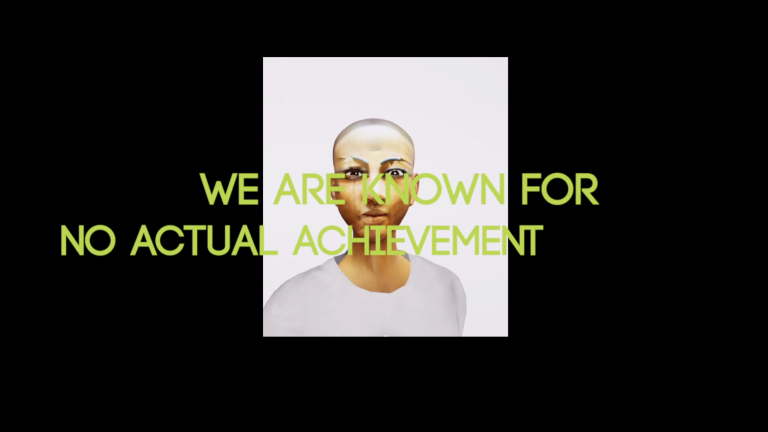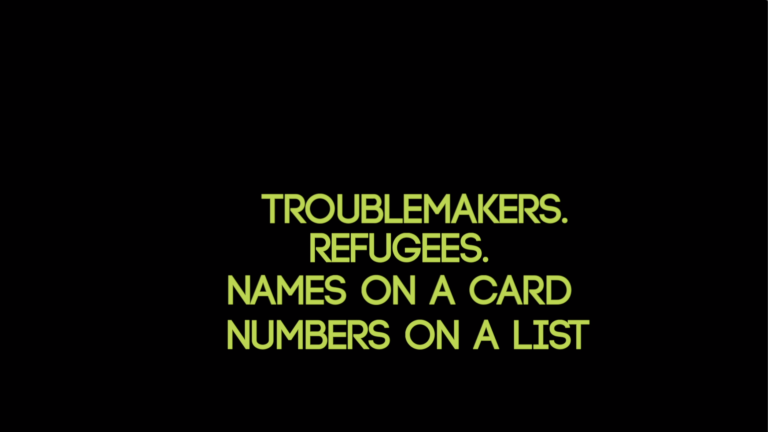Basel Abbas and Ruanne Abou-Rahme
Palestine
At those terrifying frontiers where the existence and disappearance of people fade into each other
Fragments from Edward Said’s most personal and poetic work After the Last Sky are repurposed to create a new script that reflects on what it means now to be constructed as an ‘illegal’ person, body or entity. The script is turned into a song sung and performed by the artists as multiple avatars. Using a software that generates avatars from a single image the avatars in the video are all drawn from people who participated in the ‘March of Return’, that continue to take place on the seamline in Gaza, an area that has been under physical siege by the Israeli army since 2006. 40,000 people marched weekly to the military fence not only to break the siege but to be able to return to their villages and lands, protesters were killed, maimed and disabled week in and week out. With the impossibility of the artists, who were also in Palestine, reaching the marchers and the marchers reaching them the avatars that are created create a composite between the original images and the artist as the performers of the avatars only a 100 km away. The work attempts to rupture this impossible imposed distance in an act of intense proximity and new becoming. The algorithm in the avatar software renders the missing data and information (due to the low resolution of images circulated online) in the original image as scars, glitches and incomplete features on the avatar’s faces. By keeping and not ‘fixing’ these visible scars the work speaks not only to the violence of the material reality but to the often invisible and embedded violence of representation itself in the circulation/consumption of images and ultimately to the violence in the algorithm. At those terrifying frontiers thinks about how to continue, how to mutate, in order not only to survive but to generate resistant possibilities of being and breathing within impossible conditions of violence and erasure.
Basel Abbas and Ruanne Abou-Rahme work together across a range of sound, image, text, installation and performance practices. Their practice is engaged in the intersections between performativity, political imaginaries, the body and virtuality. Largely their approach has been one of sampling materials both existing and self-authored in the form of sound, image, text, objects and recasting them into altogether new ‘scripts’. The result is a practice that investigates the political, visceral, material possibilities of sound, image, text and site, taking on the form of multi-media installations and live sound/image performances.


